This year in 2021, Memorial Day fell on May 31st. This happens to co-inside with another day that happens to be near and dear to me…. National Web Designer Day! Each and every site you visit on the internet, was built and designed by a Web Designer. Whether they were a professional hacking out every individual piece of code or a hobbyist using a pre-built site and themes, it took a human being performing actual work to bring you the wonders that spill across the information superhighway every day. Web Designer Day is set aside to honor these people from every walk of life that bring us the wonders of the internet.
How did it begin?
The history of web designers is really just the history of the web and how it came to be, in much the same way that the history of a building is the history of its construction. From the moment the web began being conceived, there was someone who had to spend time designing the original website.
Web Designers don’t just make the pretty parts either, all the little bits and pieces that keep a site running in the background are developed by someone somewhere, and often with different specialties. So don’t let Web Designer Day go by without thanking a web designer for his efforts.
Lets take a stroll down memory lane!
You can find many pivotal points in the history of the World Wide Web, or Internet. But what we’re going to discuss are just a few that had direct baring to me at some point in my life. But we’re also going to take a look at other points that may not have directly effected me, but are very important to mention, non the less.
Adobe Photoshop 1.0
Feb. 19 1990
Adobe Systems released a raster graphics editor called Photoshop 1.0. The program was only available for the Macintosh platform (Mac System 6.0.3) and required at least 2 MB of RAM and an 8 MHz processor for its operation. Do you guys remember those MAC’s? My school had one and I was 7 years old playing around on this app.
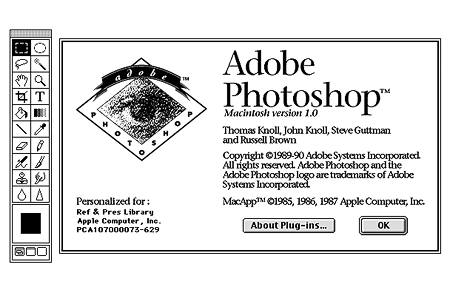
Yahoo!
January 1994
Jerry Yang and David Filo, two Ph.D. students from Stanford University, created a list of websites entitled “Jerry and David’s Guide to the World Wide Web.” In March 1994, the portal was renamed Yahoo! and the yahoo.com domain was registered on January 18, 1995. Yahoo is an acronym for “Yet Another Hierarchical Officious Oracle”. In March 1995, the Yahoo! search engine was launched as part of the portal.
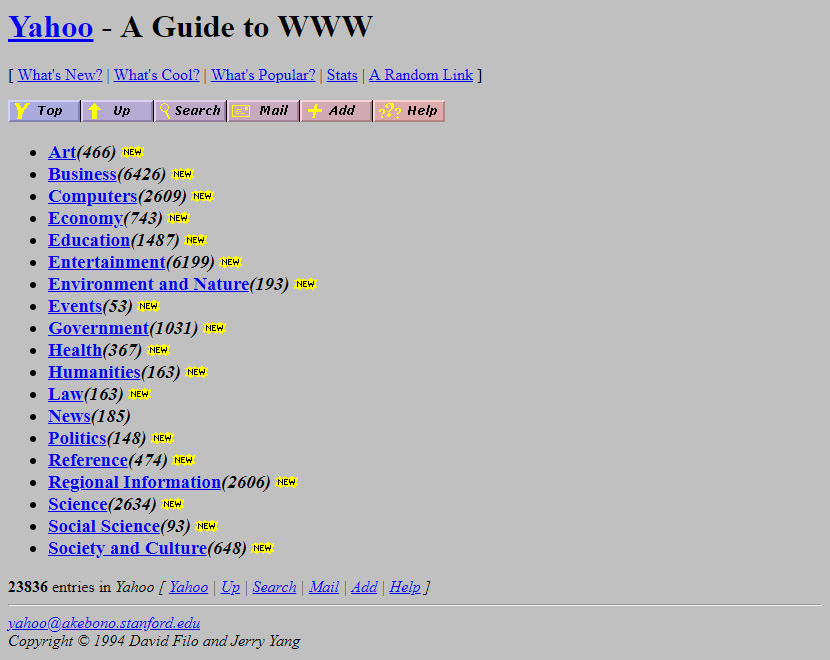
Netscape 0.9
October 13 1994
The Mosaic Communications Corporation (renamed Netscape Communications Corporation on November 14, 1994) launched, under the name Mosaic Netscape 0.9, the first one in a series of browsers, called Netscape Navigator in the subsequent versions. Shortly after being released, Mosaic Netscape 0.9 and Netscape Navigator 1.0 (released on December 15, 1994) became widely popular and, within a few months, assumed a dominant position on the market.

The First Web Banner
October 27 1994
Oh the infamous banner ads. If you ever wondered where the madness began, look no further.
The AT&T Telecommunications Company placed the first web banner in Internet history on the HotWired magazine website. The first web banner in the world was 476×56 px and contained only the phrase “Have You Ever Clicked Your Mouse Right Here?”. Clicking on the banner led to a virtual tour of world galleries and museums.

Lycos
April 13 1995
Michael Loren Mauldin from Carnegie Mellon University developed one of Lycos’s oldest search engines. The name of the search engine is derived from Lycosidae, a Latin name for a family of wolf spiders.

Internet Explorer 1.0
August 16 1995
Microsoft released, as a part of its bonus package, the Microsoft Plus! Internet Jumpstart Kit (later also known as the Internet Connection Wizard) for Windows 95, which included Internet Explorer 1.0. In the original version of Windows 95, a web browser was not available, as Microsoft underestimated the potential of the rapidly developing Internet. The source code for Internet Explorer 1.0 was based on the older Spyglass Mosaic browser for which Microsoft purchased license rights. Internet Explorer 1.0 occupied only 1 MB of disk space and its features were considerably limited compared to other browsers at the time.
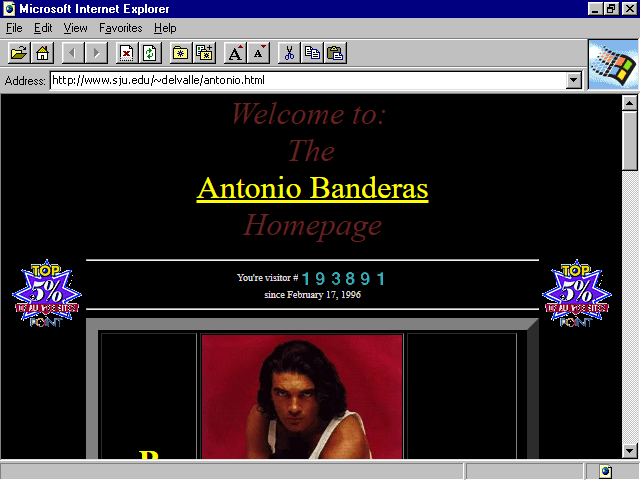
Macromedia Flash 1.0
December 18 1996
In December 1996, Macromedia acquired FutureWave Software, which was developing the FutureSplash animator. The program was used to create vector animations that could be played with the FutureSplash Viewer plugin in the then popular Netscape Navigator and Internet Explorer. In December 18th 1996, Macromedia released an enhanced version of this program called Macromedia Flash 1.0.

Mozilla
February 28 1998
Netscape Communications Corporation released the source code of the Netscape Communicator 5.0 web browser, which became the beginning of a community-based open source project called Mozilla. In 2003, the Mozilla Foundation, a non-profit organization, was founded on the basis of the original project.

September 4 1998
A pair of Ph.D. students from Stanford University, Larry Page and Sergey Brin, created the Google search engine. Google originally started as a research project whose aim was to find relevant search results using a mathematical algorithm. The algorithm, later called PageRank, analyzed relationships between individual webpages based on their cross-references, thus assessing their importance. The name Google is a deliberate misspelling of the word googol, which refers to a very high number – 1 followed by a hundred zeros (10100).

Wikipedia
January 15 2001
Jimmy Wales and Larry Sanger founded Wikipedia, a multilingual internet encyclopedia. The content of the encyclopedia is shared under a free and open license of the Creative Commons. Volunteer contributors from around the world participate in the creation of Wikipedia entries. Wikipedia’s precursor was the Nupedia web encyclopedia, to which, unlike Wikipedia, only experts were allowed to contribute. At the beginning of 2018, Wikipedia contained articles written in nearly 300 languages.
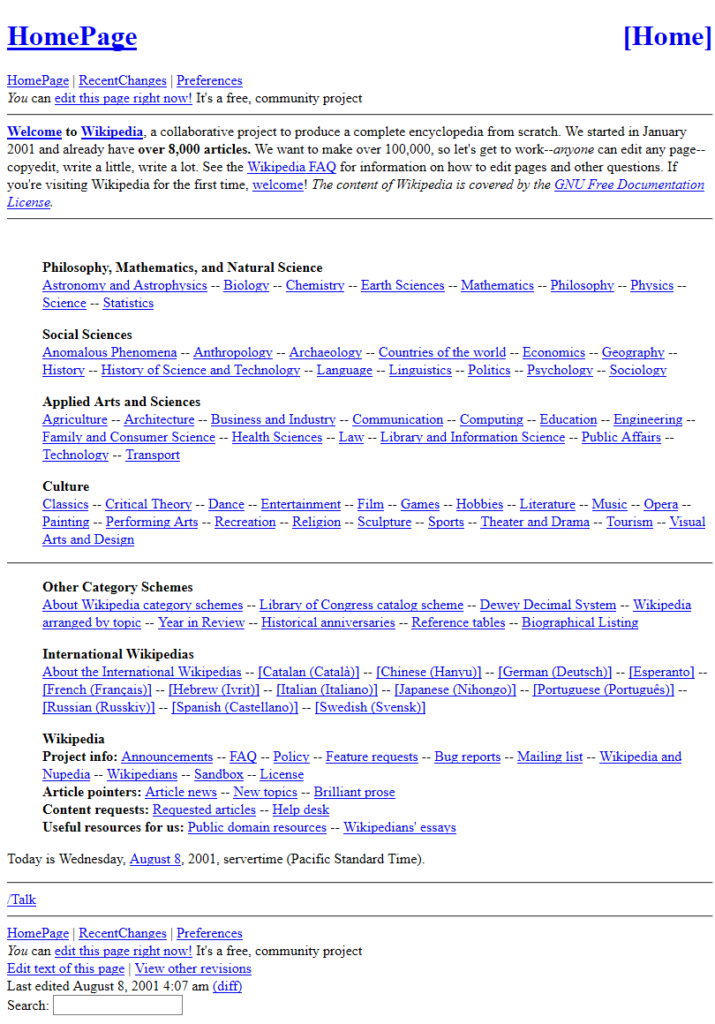
WordPress 0.7
May 27 2003
This happens to be near and dear to me, because I use WordPress to build my websites. It’s such a great CMS program. Web developers Matt Mullenweg and Mike Little created the first version of the open source content management system called WordPress 0.7. The publishing system is based on PHP and MySQL technology and is developed under the GNU GPL free software license. The predecessor of WordPress was the b2/cafelog blogging platform. WordPress is currently the most popular content management system, and more than 30% of websites are using it worldwide.

Safari
June 23 2003
Apple introduced its own web browser, Safari 1.0. The browser uses the WebKit renderer to display website content. Safari 1.0 was initially available for download as a standalone program, but, in October 2003, it became the default Mac OS X 10.3 operating system browser.

MySpace
August 1 2003
Tom Anderson and Chris DeWolfe founded the MySpace social network. Its concept was inspired by the then popular social network called Friendster. MySpace popularity skyrocketed, and by February 2004, the network had acquired one million users. Between 2004 and 2010, MySpace was one of the largest social networks worldwide. In April 2008, however, the number of unique monthly users was surpassed by Facebook, and since then the popularity of MySpace has been on a continuous decline.
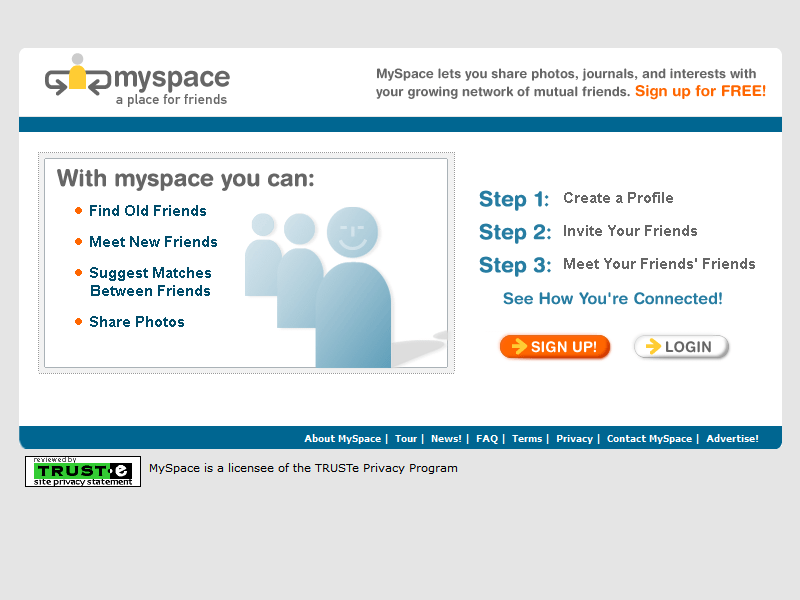
Youtube
February 14 2005
Three former PayPal employees, Chad Hurley, Steve Chen and Jawed Karim, launched the YouTube website for publishing and sharing video files. The first video called “Me at the zoo” was uploaded to YouTube on 23 April, 2005 by one of the co-founders, Jawed Karim. It was a short video from the San Diego zoo. In November 2006, YouTube was purchased by Google for $ 1.65 billion.

Responsive Web Design
May 25 2010
What is responsive web design? Well, to put it simply, on your desktop computer, when you resize your browser window and words, media, links, icons, and all the content reshapes to perfectly match the size and orientation of your window. This was introduced mainly because of smart phones and tablets becoming popular. This made it possible for web designers to make one site, instead of one for desktops and one for mobile. Web designer Ethan Marcotte published an article entitled “Responsive Web Design” in the online magazine A List Apart. The author describes a new way of styling HTML documents which allows for an optimization of website content display with regard to resolution or display size. Basic responsive web design techniques include fluid grid, flexible images, and CSS3 module media queries.

The End of Flash
June 25 2017
Adobe Systems announced that it would cease support for Flash in 2020 and would no longer issue additional security updates for Adobe Flash Player. In the field of web multimedia and interactivity, Flash became gradually replaced by HTML5, WebGL, or WebAssembly technology.

Well, there you have it. These moments in time have special meaning to me. I mean, who didn’t have a Myspace page? Whose crying over the death of flash? NOT ME. And there are many more important moments in tech that I didn’t mention such as the first iPhone, the birth or Reddit, or the first stable release of Google Chrome?



